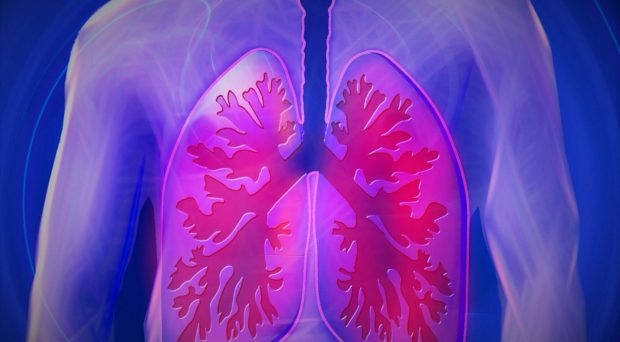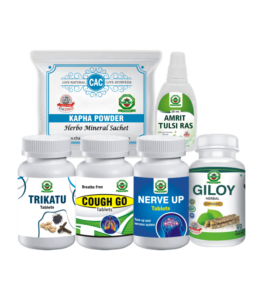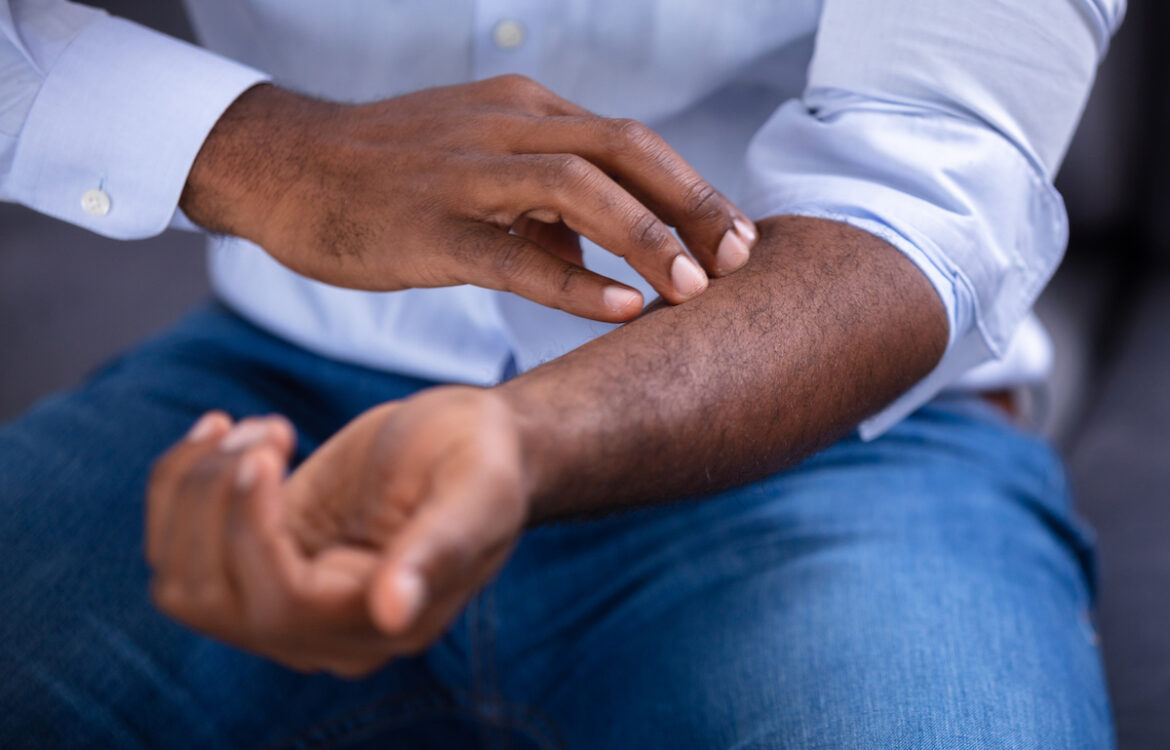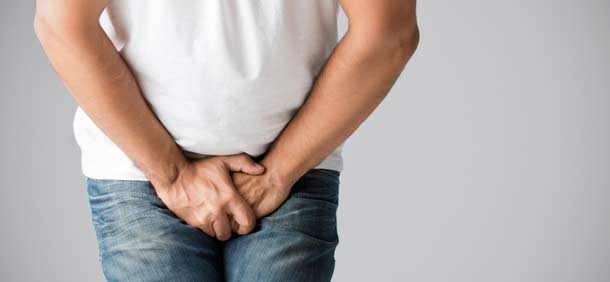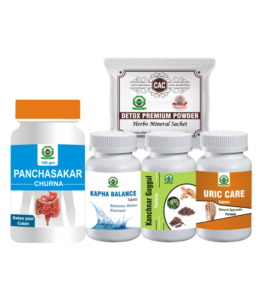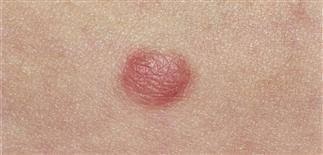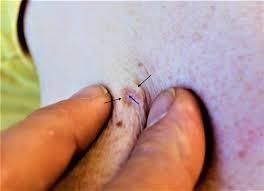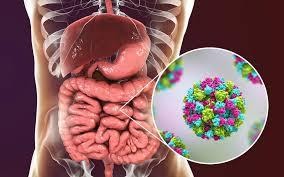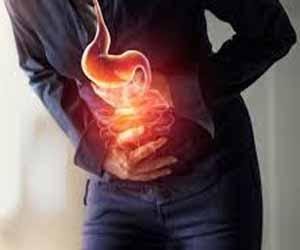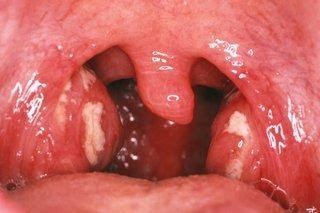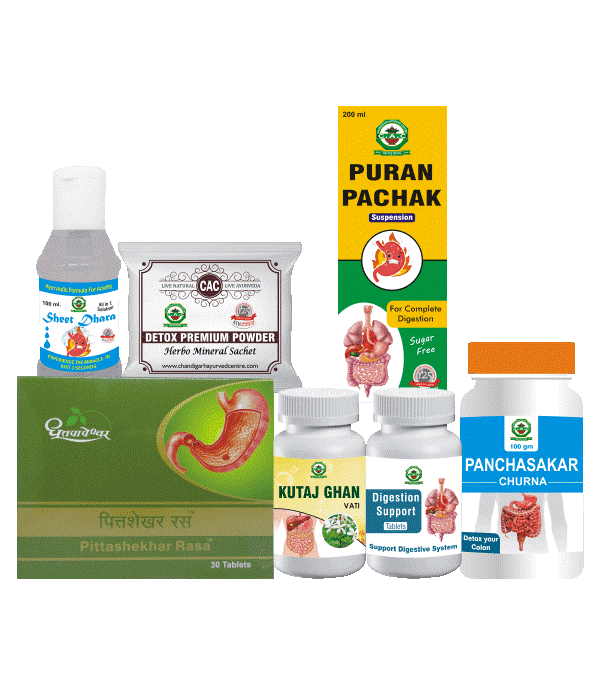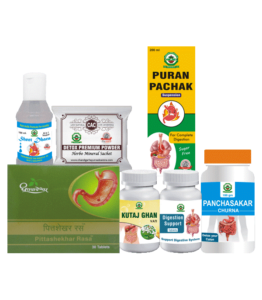Author Archives: Dr. Vaidya Karanvir Singh
HOW TO TREAT PNEUMONIA WITH AYURVEDIC REMEDIES
- January 12, 2022
- Posted by Dr. Vaidya Karanvir Singh
- 0 Comment(s)
DESCRIPTION
Infection in the lungs is called pneumonia. This leads to an inflammatory condition in the lungs. Pneumonia is mainly caused by infection with viruses and bacteria. It can also be caused by viruses, bacteria and parasites. Apart from this, it is also less likely to be caused by infection with other microorganisms, some drugs and other diseases.
Also, if we talk about the conditions and factors that promote pneumonia, then smoking, decreased patient immunity, excessive drinking, severe lung disease, severe kidney disease and liver disease. Apart from this, the use of certain drugs such as proton-pump inhibitors or H2 blockers can also increase the risk of pneumonia. The risk of pneumonia also increases with age. Apart from this, the risk of pneumonia is also high in patients suffering from asthma, heart disease, bronchiectasis, etc.
TYPES OF PNEUMONIA
There are five types of pneumonia, which are as follows.
- Bacterial pneumonia
- Viral pneumonia
- Mycoplasma pneumonia
- Aspiration pneumonia
- Fungal pneumonia.
SYMPTOMS OF PNEUMONIA
knowing its symptoms is very important for the diagnosis of any disease. In such a situation, if the symptoms of a serious disease like pneumonia are recognized on time, then treatment is easy. Know the symptoms of pneumonia.
- The major symptoms of pneumonia infection are cough, chest pain, fever and difficulty in breathing. Also, if your temperature reaches 105 degrees Fahrenheit, it can be a sign of pneumonia.
- In general, flu-like symptoms appear, which later gradually or suddenly progress.
- The patient becomes weak and feels tired.
- The patient has cough with mucus.
- The patient feels sweating accompanied by fever.
- Due to difficulty in breathing, the patient starts breathing rapidly or loudly.
- The patient has restlessness.
- The patient loses or stops feeling hungry.
- Drop in blood pressure
- Coughing up blood
- Palpitations
- Nausea and vomiting
PNEUMONIA DIAGNOSIS AND TREATMENT
In general if people notice any symptoms of pneumonia, you should seek medical advice immediately. If we talk about the diagnosis and treatment of pneumonia, then the patient is asked by the doctor to have a chest X-ray. Along with this, on listening to the movement of the lungs with a stethoscope, the doctor also hears some sound coming from the lungs. Apart from this, blood test, CT scan, sputum test, bronchoscopy etc. are also advised by the doctors.
If we talk about the treatment of pneumonia infection, then it also depends on the condition of the disease, the age of the patient. However, antibiotics, medicines to reduce cough, medicines to reduce fever and pain are given by doctors so that the patient can get relief. Apart from this, the work of giving relief to the patient is also done by some home remedies.
NATURAL REMEDIES FOR PNEUMONIA
Here are 5 natural remedies to treat pneumonia:
GARLIC
- It has antimicrobial properties that fight against viruses, bacteria and fungi.
- Decreased body temperature
- Works to expel phlegm from the chest and lungs.
- Drink a boiled milk, water and garlic mixture, or take lemon juice with honey and garlic mixed and take thrice daily to treat the condition.
RED CHILLI
- It is rich in capsaicin which stimulates the release of mucus from the respiratory tract.
- It clears mucus from the respiratory system. Cayenne pepper is a good source of beta-carotene which makes up healthy mucus membranes.
- Put cayenne pepper in the water. Add some lemon juice to it and drink it several times a day.
- People can mix cayenne pepper in carrot juice. Both are beneficial for treating pneumonia.
FENUGREEK SEEDS
- The mucolytic properties of fenugreek provide relief from congestion. It causes sweating which removes toxins from the body and reduces fever.
- Prepare a tea made from fenugreek by boiling fenugreek seeds in two cups of water.
- Filter it and drink it.
- People can prepare herbal tea from fenugreek seeds, ginger, garlic and cayenne pepper.
- Drink this tea several times a day to get relief from symptoms.
TURMERIC
- It also acts as a mucolytic to remove mucus from the respiratory tract.
- Its antiviral and antibacterial properties help fight infections.
- Apply a paste of turmeric powder and warm mustard oil on your chest or drink a glass of warm milk and turmeric powder thrice a day.
HOLY BASIL AND BLACK PEPPER
- Both these elements are beneficial for your lungs.
- They help in treating pneumonia.
- Extract the juice from basil leaves.
- Add a pinch of ground black pepper to it and drink it every six hours.
CAC TREATMENT FOR PNEUMONIA
- COUGH POWDER – This ayurvedic powder is very effective in cough with mucus, cold, and other respiratory disorders. Cough powder is a mixture of some ayurvedic ingredients like talisadi churna, abharak bhasam, godanti bhasam, lakshmi vilas rasa, yashtimadhu churna, tankan bhasma, kaph ketu ras. These ingredients in combination show antioxidant, anti-inflammatory, bronchodilator, & expectorant properties.
RECOMMENDED DOSAGE – Take 1 sachet twice a day with honey. - TRIKATU TABLET – As the name suggests three ingredients are used for its preparation like Shunthi, Pippali, & Maricha. These herbs in combination deal with the loss of appetite, gas, flatulence, bloating, abdominal distension, weak digestion, constipation, abdominal pain, etc.
RECOMMENDED DOSAGE – Take 1 tablet twice daily with normal water. - COUGH GO TABLETS – These herbal tablets are beneficial in cough, cold, bronchitis, & other respiratory disorders. Cough Go Tablets are ayurvedic formulation containing Sonth (Zingiber officinale), Mulethi (Glycyrrhiza glabra), Pippali (Piper longum), Kali mirch (Piper nigrum), etc. All these ingredients show antioxidant, anti-inflammatory, bronchodilator, & expectorant properties. This is very beneficial in fever due to phlegm and treats the chronic cough. It helps in reducing cough, headache, rhinitis, etc.
RECOMMENDED DOSAGE – Take 1 tablet twice daily with normal water. - GILOY CAPSULE – Giloy capsules are formed with the standardized extract of herb giloy (Tinospora cordifolia). The Giloy herb improves immunity, removes toxins from body, and purifies blood, beneficial in cough, cold, fever, & bronchitis.
RECOMMENDED DOSAGE – Take 2 capsules twice a day with normal water. - NERVE UP TABLETS – Nerve up tablets help in balancing the vata doshas and kapha dosha, and acts as nervine stimulant. It shows effective results in improving the central nervous system. It contains natural ingredients like shudha kuchla, shudha shilajeet, abhrak bhasma, praval pishti, shankh bhasma etc. These contains natural vatahar properties and helps in curing vata disorders, speed up physical and mental processes. It act as Respiratory stimulant, helps in Joint pain, Inflammation, Stiffness, Gout, Arthritis, Bodyache, Erectile dysfunction, and Body weakness.
RECOMMENDED DOSAGE – Take 1 tablet twice daily. - AMRIT TULSI RAS – Amrit Tulsi Ras is a pure herbal preparation containing five types of Tulsi extracts Ocimum sanctum, Ocimum gratissium, Ocimum canum, Ocimum basilicum, Ocimum citriodorum. This herbal drop increases immunity, helps to treat cough, common cold and skin, respiratory diseases specially bronchitis. It gives effective results in bacterial and viral infections.
RECOMMENDED DOSAGE – Take 2 drops twice daily in a cup of water.
Pneumonia Care Kit
AYURVEDIC TREATMENT IN DEFICIENCY OF VITAMIN D
- January 12, 2022
- Posted by Dr. Vaidya Karanvir Singh
- 0 Comment(s)
OVERVIEW
- Vitamin D is produced by the body in response to skin being exposed in sun light and also occurs naturally in few foods.
- In Ayurveda defines dhatu which are seven kinds(saptadhatu)- ras, rakta, mamsa, meda, asthi, majja and shukra.In Ayurveda
- These dhatus supports the structure of body and these dhatus connected with the tissues
- From above seven dhatus DHATU ASTHI gives solid structure to the body
- Earth and air (prithvi and vau) produce healthy asthidhatu
NORMAL LEVEL OF VITAMIN D
- Vitamin D levels between 20 and 40mg\ ml
- Recommend dietary allowance (RDA) – 400IU or 10ug cholecalciferol
- In India – due to good sunlight 200IU or 5ug cholecalciferol
- Vitamin D Is also referred to as “the sunshine vitamin” because sun is the one of the best source of vitamin D
- It is also known as antirahitic vitamin
- People get vitamin D through food and by exposure to sunlight
- Arthritis and muscle pain linked to deficiency of vitamin D even post surgery recovery and healing is also depends on how less vitamin D in body
- In children – Deficiency of vitamin D or an utilize vitamin D may lead to a condition called Rickets (weakening and softening of the bones) brought on by extreme calcium loss.
- in rickets plasma level of calciferol decreases and alkaline phosphate activity increases
- In Adults – osteomalacia- softening of bones especially in weight bearing bones of the legs
Get Vitamin D in three ways–
- Through skin, from diet and from supplements
- In children – recommended daily amount of Vitamin D is 400 IU (International units) {Age 12 months – 600 IU} {People ages – 1 to 70 years 800 IU}
FUNCTIONS OF VITAMIN D
- It form and maintain strong bones
- It maintains normal cellular growth and function
- It maintain healthy immune function and preventing from excessive inflammation
- It inhibits parathyroid hormone secretion from the parathyroid gland
- Vitamin D maintain the level and absorption of calcium in body
- Vitamin D has a role in nerve, muscles and immune system
- Vitamin D helps in sleeps because it takes part in the regulation of our circadian rhythms
- Vitamin D is an essential vitamin that helps regulate calcium and phosphorus
- It plays a role in maintaining proper bone structure
- It promotes bone growth
Vitamin has two categories
- Fat soluble
- non fat soluble
- Vitamin D is a fat soluble vitamin
- Non fat soluble vitamins are important such as bone health, vision, immune function and coagulation non soluble vitamins are consumed through body tissues but they are stored in the body
SIGN AND SYMPTOMS
- Tiredness or fatigue
- Muscle and joint pain
- Weakness
- Feeling of lethargy
- Low immunity
- Blood sugar issues/diabetes
- Weight gain (obesity)
- Mood change
- Muscle cramps
- Bone loss
- Insomnia
- Muscle pain, muscle ache
- Loss of appetite
- Hair loss
- Pale skin and dark circles
- Recurring infection
- Tiredness
- Fall sick frequently
- Sore muscles
- Excessive sweating
- Bone density loss
RISK FACTORS
- Rickets (in children)
- Osteopororis (in adults)
- Type 1 diabetes
- High blood pressure Coronary heart disease
- Periodontitis
- Depression
- Asthma
- Rheumatoid arthritis
- Breast cancer
- Multiple sclerosis
- Mostly people with dark skin and adults older than 65
- The deficiency of Vitamin D also cause muscular dystrophies
- It related to bone health in the body which can even cause Parkinson”s disease
PEOPLE WHO MIGHT NEED EXTRA VITAMIN D
- Older adults
- Breastfeed infants
- People with dark skin
- Obese people
- People with Gastric bypass surgery
- Who have liver diseases, cystic fibrosis and crohn”s disease
WHY VITAMIN D IS NECESSARY
- Maintenance of bone health
- Maintenance of cardiac function
- Maintenance of healthy body weight
- Prevention of cancer
- Treatment of psoriasis
- Prevention of respiratory infections
ILLNESS DUE TO VITAMIN D DEFICIENCY
- Different types of cancer, among other ailments
- Fatigue
- Tiredness,
- Hair loss,
- Bone issues
- Back pain
- Muscle cramps
- Vitamin D deficiency is the weakening of bone health, bone loss, causing falls and fracture
- Flu
TREATMENT
- Sun bath or sun rays plays a important role in the formation of vitamin D
- Ultraviolet rays light from the sun is must needed to produce vitamin D in body
Sources of vitamin D food
- Guduchi
- Til (sesame seeds) – sesame seeds has highest vitamin D2 quotient of 67.74
- Drumstick
- Egg yolk – eggs are loaded with vitamin D
- Milk
- Fatty fish – high on vitamins protein and healthy fats
- Yogurt
- Butter
- Oatmeal
- Spinach
- Orange juice – one cup of fortified orange juice can add up to 137 IU of Vitamin D
- Mushrooms- selenium in mushrooms boosts immunity
- Beef liver–Beef liver contains protein, minerals,
- Cereals
- Eat fortified food
- Cod liver oil- Improved bone health, increased immunity
- Surya namaskar– Suryamnamaskar consisting 12 steps with specific lines of mantra and to be done as the sun rises from this body get ample amount of vitamin D
- Abhyanga (oil massage) –Massage with olive oil or any medicated oil sitting out in the sun.
- Agni- Indigestion which affects the doshas balance (vata, pita, kapha) which produce many deficiencies so its important to improve digestive system so that absorption of nutrients improves
- Internal lubrication (navdwara) ( nine openings of the body) – This lubricates the body by applying two drops of ghee helps or improved the absorption of nutrient
HOW TO GET RID OF PROSTATE INFECTION NATURALLY
- January 12, 2022
- Posted by Dr. Vaidya Karanvir Singh
- 0 Comment(s)
OVERVIEW:-
- A prostate infection (prostatitis) occurs when prostate and the surrounding area become inflamed. The prostate gland size like a walnut.
- It is located between the bladder and the base of the penis. The tube that moves urine from the bladder to the penis runs through the center of prostate.
- Several types of infections can affect the prostate. Some men with prostatitis faces no symptoms at all, while others including frequent pain.
SYMPTOMS:-
Symptoms of a prostate infection vary depending on the type:-
ACUTE BACTERIAL PROSTATITIS:-
- Burning or pain during urination
- Nausea and vomiting
- Body aches
- Inability to empty your bladder
- Fever and chills
- Pain in your abdomen or lower back
CHRONIC BACTERIAL PROSTATITIS:-
- Burning while urinating
- Frequent or urgent urination
- Pain around the groin, lower abdomen, or lower back
- Bladder pain
- Testicle or penis pain
- Having a weak urine stream
- Painful ejaculation
- UTI
TYPES OF PROSTATITIS:-
There are four types of prostatitis:-
Acute bacterial prostatitis:- This type of prostatis is the least common and lasts a short time. It can also be life-threatening if untreated. It is the easiest type of prostatitis to diagnose.
Chronic bacterial prostatitis:- Symptoms are less severe and develop over several years. It’s more likely to affect adult and middle-aged men and cause recurring urinary tract infections .
Chronic prostatitis, or chronic pelvic pain syndrome:- This condition devlop pain and discomfort around the pelvicand groin region.It can affect men of all ages.
Asymptomatic inflammatory prostatitis:- The prostate is inflammed but there are no symptoms. It’s generally find out when a doctor is diagnosing another illness.
CAUSE:-
Some bacteria that lead UTIs can cause prostatitis. Some bacteria that cause UTIs and prostatitis include:-
- Proteus species
- Klebsiella species
- Escherichia coli
Some bacteria that cause STDs, like gonorrhea and , chlamydia can also lead acute bacterial prostatitis. Other conditions that can lead to acute bacterial prostatitis include:-
- Urethritis, or inflammation of urethra
- Epididymitis, or inflammation of epididymis
- Phimosis, which is the inability to pull back the foreskin of penis
- Injury to perineum, which is the area between scrotum and rectum
- Bladder outlet obstruction, which can occur due to an enlarged prostate or stones in bladder
- Urinary catheters or cystoscopy
DIAGNOSIS:-
Several ways to dectect the infection like:-
- Digital rectal examination(DRE)
- Blood culture
- Urine culture
- Urodynamic Test
- Cystoscopy
- Ultrasound
- Prostate Biopsy
RISK FACTORS:-
Many people are more likely to get prostate infections. Risk factors can include:-
- Using a catheter
- An abnormality in the urinary tract
- A current bladder infection or UTI
- A history of prostatitis episodes
- Injuries to the pelvis after undergoing procedures involving the urethra or prostate
NATURAL TREATMENT FOR PROSTATE INFECTION:-
- Home remedies may help to reduce some symptoms, but they typically cannot washed off bacteria from the prostate.
Home remedies can include:-
- Drinking more water to help elliminate bacteria
- Avoiding bladder irritants, like alcohol, spicy food and caffine.
- Taking warm sitz bath
- Using a warm pad to cure pain
- Avoiding activities that irritate the prostate, involving Cycling, horseback riding, and anything involving very long periods of sitting
- Practicing some exercises to train the bladder
AYURVEDIC VIEW FOR PROSTATE INFECTION:-
- In the science of Ayurveda, the prostate gland is situated in a bodily region that is governed by Apana vata, which also governs the colon, lower abdomen, the organs used for waste elimination and the reproductive system.
- Due to the fact that the prostate comes under the governance of the Apana Vata, we find that anything responsible for increasing the Apana Vata also subjects the prostate to pressure.
- This condition happens when the vata vitiated in the region of bladder causes distension of bladder and rectum.
- In Ayurveda treatments for Benign Prostatic Hyperplasia include, maintaing the Apana Vata, a series of external Ayurvedic therapies involving Abhyanga, Chakra Basti.
AYURVEDIC TREATNENT FOR PROSTATE INFECTION:-
- Internal detoxification called as vamana
- Internal detoxification to remove the infection in the urinary tract
- Cleaning and removing any kind of blockage in the urinary tract
- Normalizing the function of the apana vayu
- Toning up the functioning of the kidneys
DIET RECOMMENDATIONS (AAHAR):-
- Stay hydrated by drinking plenty of water
Foods to avoid:-
- Those that cause indigestion
- Excess salt
- Alcohol
- Astringent foods
- Excess ghee and oils
- New grains (navanna)
- Sour buttermilk
- Meat, especially sea food
LIFESTYLE CHANGES (VIHAR):-
- Dincharya that includes proper sleeping and waking patterns, good quality and time for sleep, sexual activities, and exercises
- Avoid activities that lead to stress
- Avoid performing excessive exercises
- Avoid suppression of urges (vegavidharan
AYURVEDIC HERBS USED IN PROSTATE INFECTION:-
- Varuna
- Haldi
- Shilajit
- Kultha
- Gokshur
- Ashwagandha
- Khadir
HOME REMEDIES FOR PROSTATE INFECTION:-
- APPLE CIDAR VINEGAR:- Apple cider vinegar is very good for prostate. The unfiltered, raw apple cider vinegar has astringent properties, helping shrink the swollen prostate glands. It helps prevent complications of an enlarged prostate such as UTIs.
- SOY:- It maintains prostate health and protects against benign prostatic hyperplasia. A diet containing soy can help for men against prostate diseases.
- TOMATOES:- Tomatoes are one of the best natural remedies for enlarged prostate. They are rich in lycopene that can help shrink the prostate.
- BROCCLI:- It has a lot of phytochemicals and they are known for reducing the rate of prostate growth. Include broccoli and other cruciferous vegetables in diet to naturally shrink the prostate.
SPECIAL CAC MEDICATION FOR PROSTATE INFECTION:-
- Uric Care Tablets
- Panchskar Churna
- Kapha Balance Tablets
- Kanchnar Guggul Tablets
- Detox Premium powder
Prostate Care Kit
SYMPTOMS OF DERMATOFIBROMA
- January 12, 2022
- Posted by Dr. Vaidya Karanvir Singh
- 0 Comment(s)
OVERVIEW:
- DERMATOFIBROMA is a common cutaneous, benign fibrous nodule, small, non cancerous skin growth on the skin that develop anywhere in the body and they are hard in touch
- Also called cutaneous fibrous histiocytoma
- Dermatofibroma are persist for life and they may heal after several years
- Dermatofibroma is common in adults and very rare in children
- LOCATION – It found anywhere in the body but most common in legs and arms
- COLOR – Skin colored, pink, red, brown or slightly pigmented
- In normal cases Dermatofibroma runs into dermis (middle layer of the skin)
- In rare cases – Growth runs into and extends to the subcutis which is very deep
- They occur mostly in women ( Male to female ratio is 1:4 )
- Dermatofibroma made of blood vessels, fibroblasts, macrophages, and mixture of tissues
- Dermatofibroma, are non cancerous growths
DURATION OF DERMATOFIBROMA:
- They do not far away on their own unless they are removed
SYMPTOMS OF DERMATOFIBROMA:
usually it is asymptomatic :
- Itching
- Discomfort
- Painless and harmless or sometimes painful
- inflammation
- main sign of dermatofibroma is – if a person pinches it will not comes towards the surface of skin (dimple inward when pinched)
- Tenderness
- DIMPLE SIGN – central portion puckers when lesion is compressed on the sides
CAUSES OF DERMATOFIBROMA –
Causes is unknown
- Local trauma(bug bite or any small injury)
- multiple dermatofibromas develop in a person with weak immunity like HIV, and autoimmune conditions
COMPLICATIONS OF DERMATOFIBROMA
- they are raised lesions and they traumatised (by razor)
DIAGNOIS OF DERMATOFIBROMA
- Pinch test – pinch the surrounding of skin to check the signs of dimples
- Dermatoscope – to see the surface growth
- biopsy or diagnostic excision – if nodule is bleeding, irritated, or abnormal shaped
TREATMENT
- Freezing the growth with liquid nitrogen
- injected with corticosteroids
- Dermatofibroma Surgical removal – simplest way to remove lesion
- Shaving flatten growth
FOOD TO AVOID
- food with high in trans fats
- processed food and fast food
- food high in sugar ( sugar causes insulin level and can cause inflammation in skin)
- FRUITS- blueberries, raspberries, blackberries, pomegranates tare rich in antioxidants and skin friendly
CAC SPCIAL MEDICATIONS IN SKIN DISEASES-
1. Detox Premium Powder:
DETOX PERMIUM POWDER is a herbo-mineral ayurvedic preparation
ingredients like Parwal Pishti, Giloy satv, Shukta Pishti, Kamdudha Ras, Gandhak Rasayan
Parwal Pishti: helps in reduce inflammation, itching in tha body
Shukta Pishti: It helps to balance the Pita dosha in the body.
Giloy Satv: it has anti-inflammatory, antioxidant, and analgesic properties .
Kamdudha Ras: it balances Pita dosha in the body.
Gandhak Rasayana: helps to cure all skin disorders
Tal Sindoor: helps to maintain balance of pitta dosha in body
Dose: 1 sachet twice daily with normal water.
2. Blood Purifier Syrup :
This syrup contains Khadir Chall, Manjistha, giloy, nimb ,harad , Baheda, Amla this ayurvedic syrup purifies the blood and removing excess toxin
DOSE– 2 teaspoonful twice daily
3. Skin Care Plus tablet:
it contains Haridra khand, Panchnimb churn, Khadir chahal, Chirayta, Mulethi, Chopchini, ajmoda
These ingredients helps to maintain the texture of skin, purifies blood, detoxifies the blood, increase blood circulation, reduce blemishes
Dose – 2 teaspoonful twice daily.
4. Panchatikta Ghrita Guggulu:
this contains Nimb, Patola, Guduchi, Vasa ingredients
it detoxify the blood, natural source of antioxidants.
Dosage–Take 1 tablets twice a day with normal water
TOP 7 AYURVEDIC TIPS TO PREVENT STOMACH FLU
- January 12, 2022
- Posted by Dr. Vaidya Karanvir Singh
- 0 Comment(s)
OVERVIEW
Stomach flu is an inflammatory infection of the digestive tract
- stomach flu also called stomach bug and norovirus
- The initial stage starts with chills, fever, nausea and goes to vomiting, body aches and pain in the body
- In AYURVEDA – Junk foods, processed foods, very cold foods creates indigestion that forms toxins and in ayurveda called ama (indigestion)
- when a person eat healthy, nourished food items that strengthen and boost the digestive system so health goal is to balance or keep a proper digestion or metabolic fire
- In most of the people have stomach flu in the night due to circadian rhythm( at night increase the immune system activities releases infection fighting chemicals that cause inflammation that feels worsen)
SYMPTOMS OF STOMACH FLU
- stomach pain
- cramps
- headache
- nausea
- vomiting
- Watery diarrhea
- occasional fever
- loss of appetite
CAUSES of stomach flu
It can be contagious when caused by (it spreads easily to others) by come in contact with germs, eat foods that have sick persons germs
- virus
- bacteria
- parasites
OTHER CAUSES
- food allergies
- antibiotics
- toxins
DIAGNOSIS OF STOAMCH FLU
- Digital rectal exam or Stool samples – to see bacteria, viruses, and parasites in stool
- sigmoidoscopy -sigmoidosacopy is to see the signs of IBD (inflammatory bowel disease)
- Physical examination
DURATION of stomach flu
- starts in as 12 hours after exposure lasts 1-14 days
PREVENTION OF STOMACH FLU
- wash your hands thoroughly(mainly after used the washroom and after have diarrhea and vomiting ) and before earing and handling foods
- keep distance
- drink that have salt and sugar both to helps intestine to absorb fluids and recover electrolytes
- disinfect hard surfaces – chlorine bleach solution (make bleach solution fresh daily)
- get plenty of rest
- heating pads – relieves in abdomen cramps
WHAT TO EAT IN STOMACH FLU
- Drink lots of fluid – teas like ginger, peppermint which relieves stomach , sports drink (helps in electrolyte balance)
- ( Banana, Rice, Applesauce, Toast ) diet –
- Banana – it helps in replace the potassium and strengthens the stomach lining
- Rice – it has carbs which provides energy
- Applesauce – it has carbs and sugars which contain pectin helps in diarrhea
- Toast
WHAT NOT TO EAT IN STOMACH FLU
- alcohol – It works as a diuretic
- dairy – it hard to digest and can cause gas and diarrhea
- fiber
- grease – avoid salty and greasy foods
- spices
AYURVEIDC TREATMENT in STOMACH FLu
Ayurvedic churna for stomach infection
- ashwagandha churna
- sitopladi churna
- triphala churna
- haritaki churna
- giloy churna
CAC MEDICATIONS for stomach flu
Kutaj Ghan Vati
- It is very useful in diarrhea, intestinal infection, and dysentery.
- this vati treats all digestive probelms
- It contains like Kutaj (Holarrhena antidysenterica), Ativisha (Aconitum heterophyllum) these ingredients helps in abdominal pain, abdominal cramps, nausea, vomiting, loose stools, weakness, fatigue.
- kutaj ghan vati has antioxidant, anti-diarrheal, anti-inflammatory properties
Recommended Dose: Take 2 teaspoonful twice daily
Sheetdhara Syrup
- It works as a antacid that relieves stomach acidity and heartburn, indigestion, stomach ache . This syrup is helps in gastritis, , abdominal cramps, bloating
- It helps in hyperacidity, heartburn, abdominal cramps, abdomen pain, discomfort in stomach, feeling of pressure in stomach,
Recommended Dose: Take half teaspoon twice a day with four teaspoon of water on an empty stomach
Liver care syrup
- Liver Care syrup balancing Pitta dosha, functions of liver, and improve blood flow from the liver.
- It contains Ingredients like Kalmegh (Andrographis paniculata), Kutaki (Picrorhiza kurroa), Bhumi amla( phyllanthus niruri), Giloy (Tinopora Cordifolia), Yavakshar( Hordeum vulgare), Imli Kshar( Tamarindus indica), Mukta Shukta pishti etc.
- liver care syrup has Antioxidant, anti-inflammatory properties.
- This syrup helps in digestion, enhances appetite.
Recommended Dose : Take 2 teaspoonful twice daily
Tulsi ras
- It has Anti oxidants, Anti bacterial, Anti viral, Anti septic, Anti flu, Antibiotic, Anti inflammatory, Anti toxin.
Recommended dose – Take 1 DROP of tulsi ras in a glass of water/tea 4-5 times a day
Giloy capsules
- giloy has anti oxidants properties
Recommended dose – Take 1-2 capsules twice daily after meals
Detox Standard Powder
- This powder contains ingredients like– Parwal pishti, Giloy satav, shankh bhasam, Sutshekhar ras, Sudhyog tab, shwet parpati, Tal sindoor, Akik pishti, Jahar mohra, & Moti pishti.
- It relieves the body from weakness, loose stools, fatigue, abdominal pain, cramps, etc.
Recommended Dosage –Take 1 sachet twice a day with normal water.
Active Plus Tablet
- These tablets improves digestion, eliminates constipation, stress, nourishes brain, acts as antioxidant, analgesic, anti-inflammatory, etc.
Recommended Dosage: Take two tablets twice a day with water.
7 AYURVEDIC TIPS TO PREVENT STOMACH FLU
- Drink ginger or cumin seeds tea
- Drink warm water (small and frequent sips)
- Avoid cold foods
- Dont drink cold water as it slows digestion (agni)
- In your diet add some spices like – turmeric, fennel seeds, coriander, hing etc.
- Holy basil
- Cloves
- Cooked veggies and soupy dishes
- Apple cider vinegar helps in nausea and stomach upset
What is Viral Gastroenteritis and How to treat it?
- January 12, 2022
- Posted by Dr. Vaidya Karanvir Singh
- 0 Comment(s)
What is viral gastroenteritis?
- Viral gastroenteritis is condition in which there is an inflammation and irritation of intestines occur that may be caused by viruses infection, most commonly include norovirus or rotavirus. This illness is also known by the name of stomach flu.
- This is a contagious condition that spreads through close contact with people who have the virus or through contaminated food or water.
What are the symptoms of viral gastroenteritis?
Symptoms of gastroenteritis occur shortly after infection. For example, symptoms caused by norovirus typically develop within 12 to 48 hour. Symptoms from adenoviruses is noticed after 3 to 10 days after contact.
Symptoms can include:
- nausea and vomiting
- headache, muscle aches, or joint aches
- loose, watery diarrhea
- fever with chills
- sweating or clammy skin
- abdominal pain
- loss of appetite
There is condition of medical emergency if:
- diarrhea remains for 2 days or more without getting less frequent
- there is bloody diarrhea
- your infant develops diarrhea
- you show or see signs of dehydration, such as sunken eyes , dry lips or dizziness
Prevalence of Viral Gastroenteritis
Viral gastroenteritis affects people of all age group. But there are some factors that can increase the risk of contracting viral gastroenteritis. People who are at a higher risk include:
- children under the age of 5
- older adults,
- people with a compromised immune system
- those who are part of schools, day care, religious gatherings, and other indoor group settings
What causes viral gastroenteritis?
Viral gastroenteritis is caused by different viruses. This virus can transmit through
- taking contaminated food or drinking contaminated water
- Using contaminated utensils or other items
- touching contaminated surfaces
- not washing or sanitizing hands properly
Other factors that may also contribute in causing viral gastroenteritis include:
- being malnourished, mainly low levels of vitamin A or zinc
- antibiotic or antacid use
- anal intercourse
Various viruses can cause viral gastroenteritis. The most common include:
- Rotavirus
- Norovirus
- Adenovirus
- Astrovirus
Detail of these viruses
Rotavirus
- Rotavirus infection is commonly seen in infants and young children. Those who come in contact with this virus then can pass the virus to other children and adults. It’s usually transmitted via the mouth.
- Symptoms of rota virus infection occur within 2 days of infection and include:
- Loss of appetite
- Vomiting
- Watery diarrhea that lasts from 3 to 9 days
- So early vaccination is recommended to prevent severe rotavirus illnesses in infants and small children.
Norovirus
- Norovirus is highly contagious and can affect people in any age. It transmits through contaminated water ,food and surfaces, or by people who have the virus. Norovirus is common in crowded spaces.Symptoms include:
- Fever
- Nausea & Diarrhea
- fever
- body aches
Adenovirus
- The adenovirus affects people of all ages. It can lead to several types of illness, including gastroenteritis. The adenovirus can also cause Symptoms like common cold which include
- Bronchitis
- Pneumonia
- Conjunctivitis
- Adenovirus spread through the air while sneezing and coughing, by touching contaminated objects, or by touching the hands of infected person with the virus. Symptoms associated with adenovirus include:
- Runny nose
- sore throat
- Redness in eyes
- fever
- Sneezing & coughing
Astrovirus
- Astrovirus commonly causes gastroenteritis in children. Symptoms associated with astrovirus include:
- headache
- diarrhea
- mild dehydration
- stomach pain
- The virus mostly affects people in late winters and early spring.
What are the complications of viral gastroenteritis?
The main complication of viral gastroenteritis is dehydration, which can be mild to severe in babies and young children.
Other complications that are notice in people of viral gastroenteritis include:
- muscle weakness
- nutritional imbalances
- body weakness or fatigue
Dehydration can lead to several complications of its own. These may include:
- brain swelling
- coma
- hypovolemic shock
- kidney failure
- seizures
To prevent complications, immediate medical attention required if there is any symptoms of dehydration.
Diagnosis of gastroenteritis
- This condition is diagnosed by medical history and physical examination.
- Your doctor may also go for stool sample that will help to test for the type of virus, or to find out if your illness is caused by a parasitic or bacterial infection.
How is viral gastroenteritis treated?
- Treatment is mainly done prevent dehydration by drinking plenty of fluids. In severe cases, hospital care is necessary.
- Over-the-counter oral rehydration solutions (OHS) can be helpful in mild cases.
- Antibiotics have no effect on viruses.
Treating diarrhea and vomiting
- Diarrhea can be treated with over-the-counter medications like loperamide (Imodium)
- Also probiotics can be prescribed to replace the healthy bacteria that’s lost during diarrhea or they may prescribe medications to treat severe vomiting.
What to eat and what to avoid
As you start to feel better , you should add foods into your diet, it’s best to opt for bland foods, such as:
- rice
- potatoes
- toast
- bananas
- applesauce
These foods are easy to digest and do not cause further stomach upset.
Until you get completely fit , you should avoid some types of foods, like:
- sugary foods
- fatty or fried foods
- caffeine
- alcohol
- dairy products
Some Self-care steps
By following some self-care measures you can ease your symptoms and prevent dehydration:
- Drink extra fluids with and between meals.
- Avoid fruit juices. These don’t replace the minerals that you’ve lost and can actually increase diarrhea.
- Electrolytes. Younger children and infants should use formulated products like OHS.
- Get lots of rest. Get good quality of sleep of 7-8 hours each night. Don’t exert yourself in any work until you feel that you have your usual level of energy and strength.
- Medications. Consult with doctor before taking any kind of medications or giving them to children. Never use aspirin for children or teenagers with a viral illness.
Ayurvedic treatment of viral gastroenteritis
Chandigarh Ayurved centre provides effective combination of medicines that are used to viral gastoentritis . These medications not only treat the symptoms but also cure this condition completely.
Medications include
- Liver care tablet
- Sheet Dhara syrup
- Kutaj ghan vati
- Giloy capsule
- Kapha powder
- Amrit tulsi ras
These medications contains unique blend of herbs that are effectively use to treat any kind of infection. By using this one can completely treat viral gastroenteritis.
For more details you can visit our website
www.chandigarhayurvedcentre.com
HOW RO TREAT TONSIL INFECTION WITH AYURVEDIC REMEDIES
- January 12, 2022
- Posted by Dr. Vaidya Karanvir Singh
- 0 Comment(s)
OVERVIEW:
- TONSILITIES is a inflammation of two oval shaped pads of the tissues called tonsil located at the back of the throat caused by viral and bacterial infection
- the inflammation may affects back of the throat including adenoids and the lingual tonsils
- ACUTE TONSILITIS – infection of the tonsils triggered by one of the several types of bacteria and viruses
- CHRONIC TONSILITS – is an tenacious infection of the tonsils which may results in tonsil stones
- Tonsils are the part of lymphatic system, which helps to fight infections
- according to ACHARYA SUSRUTA Tonsillitis compared with TUNDIKERI or GILAYU
- In ayurveda TUNDIKERI Caused by weak aggregation of toxins in body and it occurs due to kapha and rakta dosha
- Most common in children ( under the age of 3 ) and it can affect all ages
SYMPTOMS:
- Headache
- Earache
- Sore throat
- Difficulty in swallowing, breathing difficulties
- Fever with chills
- Bodyache
- Foul breath
- Enlarged tonsils
- Swollen lymph nodes in the neck
- Feeling extreme weakness and fatigue
- Unable to drink or eat due to pain
- Unable to control drooling red swollen tonsils
- throaty voice
- bad breath
CAUSES OF TONSILITIS :
- VIRAL TONSILITIS – most cases are caused by virus
- BACTERIAL TONSILITIS (strep throat) – in this tonsillitis caused by group A streptococcus bacteria
- touching contaminated surface
- inhale small particles when a sick person sneezes and coughing
- coming in contact with a sick person
- chronic infection in sinuses
- weak immunity
DIGNOSIS OF TONSIL INFECTION
- Throat swap
- Blood test
- Rash
- Examine throat for redness, swelling and white spots
TREATMENT OF TONSIL INFECTION:
- Antibiotics
- Tonsillectomy surgery – surgical removal of tonsils
HERBAL REMEDIES FOR TONSIL INFECTION:
- Lots of rest salt water gargles – it helps to soothe the a sore throat and pain, reduce inflammation
- Warm tea with honey – help to reduce discomfort and has antibacterial properties
- Ginger tea – it has anti inflammatory properties helps to reduce inflammation and discomfort due to infection
- Humidifiers (to moisten the air)- relieves the sore throat
use throat lozenges - Drink cold drinks to reduce sore throat such as ice creams, chilled smoothies, chewing gums (contains mint)
- Rest
- cinnamon – cinnamon with hot water and add raw honey to it
- turmeric – turmeric and salt to a hot glass of water and gargles with this every morning to get rid of the tonsil
- fenugreek seeds – gargles with fenugreek seeds water helps to reduce sore throat
- lemon – lemon juice with 1tsp of honey in warm water
- garlic – eat a raw garlic clove daily to release chemical known as allicin that helps kill the bacteria and relives in sore throat
- licorice root – effective when mixed with water and apply as gargle solution
- slippery elm – boiled the leaves and drink to reduce sore throat
- chamomile tea – relieves sore throat
- apple cider vinegar – it has many natural anti bacterial properties
- marshmallow roots – treat sore throat and use with raw honey for better results
- EAT SMOOTH FOODS
- DRINK WARM, COLD FLUIDS
AYURVEDIC TREATMENT OF TONSIL INFECTION:
CAC MEDICATIONS FOR TONSISILITS:
Cough Powder
- It contains antioxidant, anti-inflammatory, expectorant, digestive, and immuno- modulatory properties
- ingredients such as Talisadi Churna, Abharak Bhasam, Godanti Bhasam, Laxmi Vilas Ras, Yashti Madhu Churna, Tankan Bhasam, Kaph Ketu Ras
- relieves in blocked nose, remove extra phlegm, chest congestion, cough, cold and sore throat.
Dose : 1 sachet twice daily with Luke warm water 30 mins after meal.
Cough Go Tablet
- It helps to balance the kapha doshas, helpful in Seasonal Allergy,
- ingredients like Sonth, Mulethi, Pippali, Kali mirch, Laxmi vilas rasa, Abhrak bhasam, Tankan bhasam
- These ingredients contain Kapha doshahar properties and help in cure respiratory diseases
Dose: Take 1 650 mg tablet twice daily with plain water 30 mins after meal.
Giloy Capsules
- Giloy is known as Amrita it can use it as powder, syrup, tablets and capsules
- Giloy is best rasayan in ayurveda It has anti oxidant, anti bacterial, anti fungal and anti microbial properties.
- It boost up immune system of the body and
Dose: Take 1 cap twice daily after meal with plain water.
Triphla Syrup
- Triphala (Bibhitaki, Haritaki and Amla) – Triphala purifies the blood , build up immunity, remove toxins from body, balances all the three doshas (vata, pitta, kapha) of body and reduce respiratory problem
- Reduce extra phlegm, chest congestion, cough, cold and sore throat.
- It has anti inflammatory and anti-oxidant properties
Dose : 2 tsp twice daily before or after meal as recommended by physician.
Amrit Tulsi Ras
- It is prepared with three type of Tulsi named Shama Tulsi, Rama Tulsi, Kapoor Tulsi, Shwet Tulsi Nimba Tulsi helps to reduce allergic reactions.
- It has anti- oxidant, antiseptic, antipyretic, anti-inflammatory and anti microbial properties
- It is useful in tonsillitis, bronchitis, nasal congestion, asthma, and other respiratory ailments.
Dose : Take two to three drops twice daily.
ATTENTION DEFICIT HYPERACTIVITY DISORDER
- January 11, 2022
- Posted by Dr. Vaidya Karanvir Singh
- 0 Comment(s)
DESCRIPTION
- ADHD is a mental health condition that causes hyperactivity in behavior.
- People suffering from this can focus their attention on one task or spend a long time.
- You can refuse a bit of trouble to sit still. Many problems in ADHD
- There are combinations such as difficulty maintaining attention, hyperactivity and impulsivity Behavior.
- ADHD affects children and adults and can last into adulthood.
- This is the most common mental disorder that children have to deal with.
- Affected children can be overactive and cannot control their impulses
- Such behavior interferes with life at school and at home.
- ADHD is more common in boys than in girls.
- It is usually diagnosed in the early years of school, when the child needs attention.
- Adults with ADHD need to manage time, aim, and stay organized.
CAUSES OF ADHD
- According to the researcher, the exact cause of ADHD has not been known to anyone. But there can be some causes and risk factors of ADHD.
- For example, due to any kind of disease or injury in the brain, the brain does not function properly and is unable to control emotion, behavior.
- Children may have a problem with ADHD due to genetic reasons.
- Many changes occur in the brain of children affected by ADHD, due to which the brain fails to perform its function.
- Chemical imbalances occur in children suffering from ADHD, in which the chemical imbalances of the children’s brain can be out.
- During pregnancy, the woman does not get a balanced diet, due to poor lifestyle, alcohol, smoking and consumption of drugs, the child’s brain does not develop and the child becomes mentally weak.
RISK FACTOR
- The child was born prematurely.
- Mother’s drinking during pregnancy.
- Come in contact with a toxic substance during pregnancy.
- Having a mental disorder can put you at risk for ADHD.
- Certain environmental toxins may increase the risk of ADHD.
WHAT ARE THE SYMPTOMS OF ADHD?
Symptoms in children
- Not following anyone’s instructions.
- Don’t listen to anyone.
- Making mistakes everywhere be it at school or at home.
- Not doing any work properly.
- Forgetting to do your homework.
- Always be sad
- Don’t be patient about anything.
- Shouting at the slightest thing.
- Talk more.
These symptoms are seen on elders
- Don’t get distracted by anything easily.
- Nothing is planned.
- Always be sad
- Always be in depression.
- Getting restless over small things.
- Having problems with jobs and relationships.
- Always delaying everything.
- Turning things around
DIAGNOSES OF ADHD
- Finding out if a child has ADHD is a process with several steps. There is no single diagnosis of ADHD. However, all problems are taken into account to make an ADHD diagnosis. You may ask for similar symptoms, such as anxiety, depression, sleep problems and some types of learning disabilities.
- Common tests can be done to rule out other problems along with ADHD-like symptoms in children.
- To diagnose ADHD, parents are usually asked about the symptoms in their children. Apart from this, information about the behavior can be obtained from the teacher.
- If any health problems are noticed, the doctor does a physical examination.
- If a parent feels that their child is showing symptoms of ADHD, talk to their doctor. Apart from this, you can tell about ADHD from the teacher of the child. Investigates the problems of the children in the school so that their actions can be corrected. If there are signs of ADHD, the child may be referred to a specialist for treatment.
ALLOPATHIC TREATMENTS FOR ADHD
- ADHD can be treated on a symptomatic basis.
- To control the behavior, a dose of certain drugs can be given so that some degree of improvement can be done. Apart from this, this medicine is a stimulant which does not affect everyone.
- Some people recommend taking a diet rich in omega 3 to reduce the effects of ADHD. According to some scientists, Omega 3 can prove beneficial in the treatment of ADHD.
- Certain therapies may be used in the treatment of ADHD. Social education, psychotherapy, behavioral modification etc.
- Social Education – In this, behavior is improved.
- Psychotherapy – In this, the therapist teaches you about the way you behave and how to live in the family, it helps in increasing self-esteem.
- Behavior Modification – In this, bad behavior is changed and made good.
- Core Education – Helps to teach children in school so that children affected by ADHD can be helped.
HOW TO PREVENT ADHD?
- The following measures can be taken to protect children from ADHD.
- When a woman is pregnant she should take special care of her health so that there is no negative effect on the health of the baby.
During pregnancy the woman should avoid the consumption of intoxicants, smoking, and alcohol. - Avoid leaving children in a place where there is a risk of cigarette smoke and infection.
- According to some studies, watching more TV and mobile can cause ADHD in children, so children should be allowed to watch less TV and mobile.
IBS CARE KIT
- January 11, 2022
- Posted by Dr. Vaidya Karanvir Singh
- 0 Comment(s)
INTRODUCTION:-
- IBS or irritable bowel syndrome is a group of symptoms that affect large intestine. It is common but uncomfortable condition.
- Irritable bowel syndrome is a disorder that affects the large intestine. Symptoms include cramping, Bloating,abdominal pain, , gas, and diarrhea or constipation, or both. This condition is more affects women than men. Some people can control symptoms by managing diet, lifestyle and stress.
IBS CARE KIT PRODUCTS:-
- PITTASEKHAR RAS
- DETOX PREMIUM POWDER
- PURAN PACHAK
- PANCHSKAR CHURNA
- KUTAJ GHANVATI
- SHEETDHARA SYRUP
- DIGESTION CARE TABLET
DETAIL DESCRIPTION OF MEDICINE:-
PITTASEKHAR RAS:-
- These are a classical tablets prepared from ingredients like Sootshekhar rasa, Bilwa majja etc. that balances pitta dosha in the body.
- The use of this tablets improves digestion, enhances appetite, reduces acidity, reduces heartburn, acts as a laxative, & reduces pain in the abdomen, etc.
- It is used in pitta related disorder and also permute the liver function test. The natural ingredient helpful in supporting the body,s health and improves the quality of life.
Dosage:- Take 1 tablet twice daily with normal water.
INGREDIENTS :-
- SOOTSEKHAR RAS
- SHANKH BHASM
- KAPARDIKA BHASM
- AVIPATTIKAR CHURNA
- ARAGVADH
- KALMEGH
- TAMALAKI
- BHRINGRAJ
DETOX PRMEIUM POWDER:-
- These herbal packets are prepared from constituents that gives calming effect on the stomach.
- These have anti-inflammatory, antacid, and antioxidant like properties. It mainly affects the pitta dosha of the body and maintains appropriate digestion of the body. This powder also help digestion related disorders.
DOSAGE:- Take one sachet twice daily with normal water.
INGREDIENTS:-
- MOTI PISHTI
- PARWAL PISHTI
- SHUKTA PISHTI
- GILOY SATVA
- KAMDUDHA RAS
- JAHAR MOHRA
- GANDHAK RASAYAN
- SANKH BHASM
- SUTSEKHAR RAS
- SHWET PARPATI
- YAVAKSHAR
PURAN PACHAK :-
- Puran Pachak is a herbal Syrup of 200 ml and is Purely Ayurvedic formulation. This syrup helps in Digestion, Supports the Digestive system, and balances the doshas of body.
- It also helps to eliminate the impurities or ama from the body. This syrup reduce the Acidity, and also Supports the body health. It shows Antacid, Digestive, Anti-inflammatory, Analgesic.
- This syrup is prepared by ayurvedic herbs . It helps to sustain the Digestive system and in the body.
DOSAGE:- Take 2 teaspoonful twice daily
INGREDIENTS:-
- MULETHI
- SAUNF
- VASA LEAVES
- CHIRAYATA
- AJWAIN
- PUDINA
- PATOL
- PARPATI
- BHRINGRAJ
- GILOY
- HARAR
- BAHERA
- AMLA
- MUKTA SHUKATI BHASM
PANCHSKAR CHURNA:-
- This is a classical herbal churna prepared from ingredients such as Saindhav lavana , Sawaran parpati ,Sahtpushpa, shunthi etc. These tablets deal with abdominal pain, bloating, flatulence, constipation, weak digestion, etc. This churna helps acidity and symptoms of extra gas in stomach.
- This churna is vry effective in many digestive related problems like indigestion, gas, nausea, bloating etc.It manage all health problems occurs due to imbalance of pitta dosha.
DOSAGE: –Take 2 teaspoonful twice daily
INGERDIENTS:-
- HARITAKI
- SVARAN PATRI
- SHATPUSHPA
- SHUNTHI
- SAINDHAV LAVAN
KUTAJ GHAN VATI:-
- Kutaj Ghan vati is purely herbal formulation. It is very benificial in curing diarrhea, intestinal infection, and diaarhea. These herbal tablets deal with all symptoms related to diarrhea patients.The term kutaj Ghan vati means a formulation obtained from the dried liquid or decoction of kutja plant.
- The herbs in these tablets show antioxidant, anti-diarrheal, anti-inflammatory properties etc.Kutaj herb has a stopping property called as stambhak in Ayurveda.This classical medicine uses the aqueous extract of the bark of kutaja plant.It balances three doshas and normalize the pitta dosha.
DOSAGE:- Take two tablets twice a day before meal with water.
Medicinal uses:-
- Antidiarrheal
- Antimicrobial
- Astringent
- Anthelmintic
- Aam Pachak (Detoxifier)
- Hemostatic
Therapeutic Indications:
- Diarrhea
- Diarrhea with Fever
- Dysentery
INGREDIENTS:-
- KUTAJA BARK
- ATIVISHA
SHEETDHARA SYRUP:-
- This herbal syrup is prepared from ayurvedic medicinal herbs that naturally relieve the symptoms like bloating, gas,acidity,burping or nausea.
- The regular use of this herbal syrup neutralizes the high acid content, reduces abdominal pain, and cramps.It provide effective and long lasting relief from acidity and gas.
DOSAGE:- Take half teaspoonful of this syrup in half a cup of water. Drink this mixture twice daily on an empty stomach.
USES OF SHEETDHARA SYRUP:-
- In Acid Reflux
- Burning sensation in chest region
- Bloating
- Nausea
- Burping
- Hiccups
- Control mood swings
- Stomach ulcers
- Improves Appetite
INGREDIENTS:-
- AJMODA
- KAPUR (Camphor)
- MINT LEAVES
DIGESTION CARE TABLET:-
- This tablet is unique blend of best digestive herbs that maintain natural PH balance in the stomach and aid digestion of all types of food.
- The herbs present in this control acidity, gas, and constipation. These complex problems are the root cause of all diseases. If the digestive system is proper it leads to proper assimilation of the nutrients in the body.
- According to Ayurveda digestive problems are due to the inequity of Pitta dosha.It is beneficial for proper digestion.It improve digestive health.
DOSAGE:- Take 1 tablet twice daily with plain water
INGREDIENTS:-
- KUTAJ
- BILAV
- DHANIA
- MUSTAK
- SHANKH BHASM
- PIPER MINT
- DADIM
IBS CARE KIT
Hearing loss – Causes, Symptoms, Diagnosis and Treatment
- January 11, 2022
- Posted by Dr. Vaidya Karanvir Singh
- 0 Comment(s)
Gradual Hearing loss that occurs with increasing age is common. Almost half the people that is older than 65 have some degree of hearing loss.
Hearing loss is of three types:
- Conductive (involves outer or middle ear)
- Sensorineural (involves inner ear)
- Mixed (combination of the two)
Many factors are responsible for hearing loss. In these factors aging and chronic exposure to loud noises both are the main factors that contribute to hearing loss. Other factors include like excessive earwax, can temporarily affect hearing that how well your ears conduct sounds.
Symptoms
Signs and symptoms of hearing loss may notice in people include:
- Not proper understanding of words, especially in crowded places.
- Muffling of speech and other sounds
- Trouble hearing consonants
- Asking others to speak more loudly ,slowly and clearly
- Withdrawal from conversations
- Avoidance of some social settings
Causes
Causes of hearing loss include:
- Gradual buildup of earwax. Earwax block the ear canal that prevents conduction of sound waves thus leads to conductive loss of hearing. Removal of Earwax can help to restore your hearing.
- Damage to the inner ear. Aging and exposure to loud noise for longer time may cause wear and tear on the nerve cells in the cochlea that send sound signals to the brain. Due to any kind of damage to nerve cells electrical signals are not transmitted properly that cause hearing loss.
- Ear infection , tumors and abnormal growths – These can be reason for hearing loss by affecting any part of ear.
- Ruptured eardrum. Loud noise, sudden changes in pressure, poking your eardrum with an object and any kind of infection can perforate tympanic membrane (ear drum) and affect your hearing.
Risk factors
Factors that may damage nerve cells in your inner ear include:
- Heredity. Your genetic makeup can affect your hearing.
- Aging. Degeneration changes of inner ear structures with time.
- Loud noise. Exposure to loud sounds for longer time can damage the cells of your inner ear and hence can affect your hearing.
- Occupational noises. Occupation where exposure to loud noise is a regular part of the working for eg. Construction or factory work , working in mines etc. can cause damage inside your ear.
- Recreational noises. Continuous exposure of noises from firearms and jet engines can results in permanent hearing loss.
- Some medications. Intake of some medications like antibiotic gentamicin, sildenafil (Viagra) and some chemotherapy drugs, can damage the inner ear. Temporary effects like — ringing in the ear (tinnitus) can occur with taking very high doses of aspirin, other pain killers, antimalarial drugs etc.
- Some illnesses. Some ailments that cause high fever, like meningitis, may damage the cochlea.
Sound levels of common noises
Decibels Noise source
Safe range
- 30 Whisper
- 40 Refrigerator
- 60 Normal conversation
- 75 Dishwasher
Risk range
- 85 Heavy city traffic, school cafeteria
- 95 Motorcycle
- 100 Snowmobile
- 110 Chain saw, jackhammer, rock concert, symphony
- 115 Sandblasting
- 120 Ambulance siren, thunder
- 140-165 Firecrackers, firearms
Complications
Hearing loss can affect your quality of life. Older people with hearing problem may have depression and isolation because hearing loss can make conversation difficult for them.
Prevention of hearing loss
There are certain steps by following which you prevent noise-induced hearing loss and avoid severity age-related hearing loss:
- Protect your ears. Limit the intensity and duration of noise exposure is the best protection. Use of plastic earplugs or glycerin-filled earmuffs at your work place can help to protect your ears from louder noise.
- Have your hearing tested regularly. Go for regular hearing tests if you work in a noisy environment. If you’ve lost some hearing, you should consult with doctor to prevent further loss.
- Avoid recreational risks.
Diagnosis of Hearing loss
Physical examination. Your doctor will examine your ear for possible causes of your hearing loss, like any earwax or inflammation from an infection. Doctor can also check if there is any structural causes of your hearing problems.
Other test may include
- App-based hearing tests.
- Tuning fork tests.
- Audiometer tests.
Treatment of Hearing loss
If you have hearing problems, Treatment is purely based upon the causative factors and severity of your symptoms of hearing loss.
Treatment Options include:
- Removing ear wax. Earwax affects the conduction of sound waves by blocking ear canal so it is a reversible cause of hearing loss. Your doctor can easily remove earwax using suction or a small tool with a loop on the end.
- Surgical procedures. In which there are structural deformities, abnormal growth in ear or abnormalities of ear drum are treated with the help of surgery.
- Hearing aids. These can be helpful if your hearing loss is due to damage to your inner ear. Hearing aid helps in amplification of sound and directs it into your ear canal.
- Cochlear implants. In severe cases of hearing loss where hearing aids, then a cochlear implant may be an option. A cochlear implant bypasses the damaged or un-functional parts of your inner ear and directly stimulates the hearing nerve.
Avoid hearing loss with Ayurveda
- With the help of Ayurveda, one can avoid this condition. As in Ayurveda there are many medicated herbs which balances the aggravated doshas.
- Chandigarh Ayurved centre provides combination of medicines that are effectively used in preventing hearling loss. These medications include
Rasayan Vati:
These ingredients show antioxidant, aphrodisiac, anti-inflammatory, antipyretic, analgesic, immuno-modulator properties. These tablets provide good results in General debility, Psychological disorders, and improves immunity.
Kapha Detox Powder:
These sachets mainly balance Vata and Kapha Doshas. It relieves exhaustion and provides energy. It also cures body aches, anorexia, and loss of sensation of tongue, indigestion, burning sensation in palms and feet and temperature.
Garlic Capsules:
It balances all the three doshas of body i.e Vata, Pitta, Kapha and maintain healthy balance of these doshas. It is an anti oxidant, anti-inflammatory, anti-bacterial, anti-fungal and immuno modulator.
Trikatu Syrup:
Most hearing loss conditions are due to vata doshas, vata vitiation can result in damage to the auditory nerve and nerve ending, which leads to defective hearing problems. Trikatu syrup balances the Vata dosha, and provides strength to nerves.
Nerve up Tablet:
It acts as a nervine stimulator and also reduces Kapha doshas. It mainly acts on the central nervous system. These contain natural Vatahar properties and helps in curing Vata diseases. It speeds up physical and mental processes.
For more details you can visit our website
www.chandigarhayurvedcentre.com


